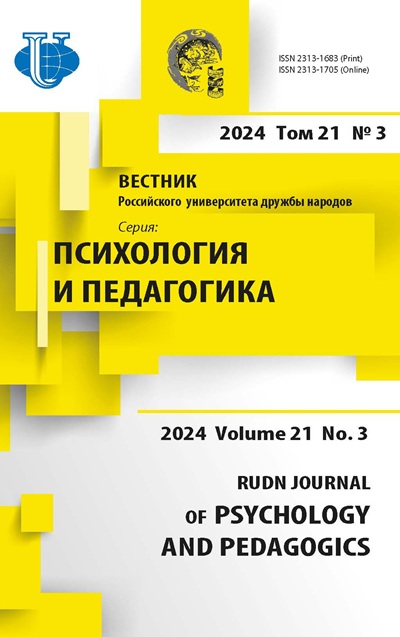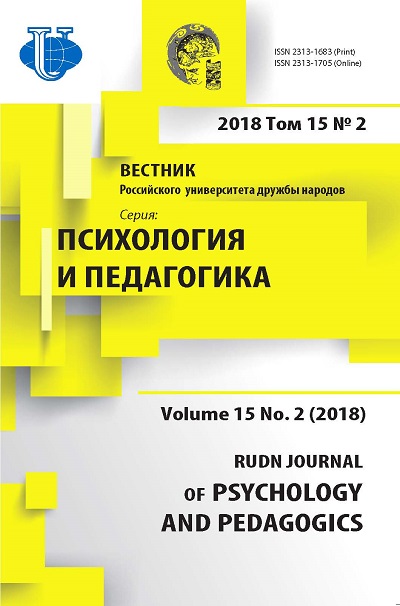BOOK REVIEW: GLOBALISATION AND HIGHER EDUCATION REFORMS
- Authors: Raitskaya L.K1
-
Affiliations:
- Moscow State Institute of International Relations (MGIMO University)
- Issue: Vol 15, No 2 (2018)
- Pages: 222-226
- Section: REVIEWS
- URL: https://journals.rudn.ru/psychology-pedagogics/article/view/18775
- DOI: https://doi.org/10.22363/2313-1683-2018-15-2-222-226
Cite item
Full Text
Abstract
Full Text
The monograph entitled Globalisation and Higher Education Reforms was published in 2016 in The Globalisation, Comparative Education and Policy Research Series. It is the 15th volume in the 24-volume book series. It explores all kinds of links and nexuses between the state and reforms conducted in higher education, and educational policy research with the focus on prevailing discourse of globalisation-driven reforms and shifts in the higher education systems worldwide. The reviewed volume dwells upon the global interrelations arising between ideology, culture, and higher education. With the knowledge society and globalisation on the rise, the higher education sector today has to get concentrated on performance and competiveness. Globalisation as an established phenomenon brings about developments in educational policy elsewhere in the world. But at the same time economic crises coupled with the policies conducted by the OECD, UNESCO, WTO as powerful actors factor in national educational policies. The book is organised into twelve chapters, which are grouped into two parts, with Chapter 1: Current Research Trends in Globalisation and Neo-Liberalism in Higher Education serving as an introduction to the volume. Chapter 1 is authored by Joseph Zajda and Val Rust. They analyse the changing nature of higher education through neo-liberal and neoconservative policies in the sector. Zajda and Rust refer to the positive and negative consequences globalisation entails, underlining that its effects call in question the basics of higher education (including the roles of students, teachers, the essence of the educational process). According to Chapter 1, globalisation has brought to the fore some assumptions of learning societies like life-long learning, essentially changing the mission of university. Universities have found themselves in “increasingly aggressive competition for international students” (Zaida, Rust, 2016, p. 3). There are no insular ways for development of higher education, with all global rankings, university league tables, international benchmarking, privatization and private universities, greater accountability, changes in funding, new governance models. In response to increased global competition almost all reforms in higher education are competitive-, finance-, market forceor equity-driven. Showing the interrelations of the phenomena, J. Zajda and V. Rust touch upon the recent developments in higher education: global competition phenomenon, innovative developments in distant learning (Massive Open Online Courses - MOOCs; online degree programmes, open universities), satellite campuses, transformation of university libraries through digitization, institutional mergers on a large scale as the effects of globalisation. The authors also consider global university rankings (“reputation race of universities”) in their connection with academic capitalism and knowledge society and economy. As they show, knowledge is treated not as a public good, but as a commodity. J. Zajda and V. Rust trace the afore-mentioned developments to neo-liberal ideology which prevails today in most countries of the world. Part I: Higher Education reforms in the USA covers five chapters (2-6), focusing on various aspects of the reforms in the USA, which to a degree reflect the global cuttingedge trends. Chapter 2: Higher Education and the Discourse on Global Competition: Vernacular Approaches Within Higher Education Policy Documents by Sylvia S. Bagley and Laura M. Portnoi overviews discourse and rhetoric around the reforms. The authors carried out a two-phase study, in which they collected and coded relevant documents (primary governmental documents on reforms, policy documents, online sources including sites hosted by the UN, World Bank, national educational agencies - a total of over 300 papers from about 100 countries), using Johnny Saldana’s two-cycle qualitative coding process (Saldaña, 2009). A continuum was set up to profile documents and countries with higher - lower intensity of discourse on global competitiveness in higher education and examine the localized concerns and country-specific goals. Chapter 3: Globalisation and new Developments in Global University Rankings by Val Rust and Stephanie Kim outlines the criteria developed for ranking systems. The chapter starts with the rise of global rankings at the turn of the 21-st century (Shanghai Academic Rankings of World Universities, 2003; the Times Higher Education World University Rankings, 2004; QS World University Rankings, 2009). The growing criticism of the university rankings, with the flawed methodology at their core (e.g. too heavily weighed on research, favourable position of English-speaking countries, etc.), has caused the development of new alternative ranking systems, which seek to reduce bias. In response, special coordinating and evaluating bodies, e.g. International Observatory on Academic Rankings and Excellence (IREG Observatory) were set up. Chapter 4: Higher Education Engagement and Economic Participation: Divide and Conquer is authored by Kassie Freeman. The chapter regards the scope of relation of higher education policies to the Black Diaspora. Against the backdrop of the brief historical context, Freeman sums up the hurdles and challenges for the Black Diaspora to access to higher education. In Chapter 5: University Social and Public Engagement: Creative Nexuses for STEM Research and International Relations written by Beverly Lindsay and Eric Jason Simeon, the so-called hallmarks of universities are considered: teaching, research, and public engagement. Lindsay and Simeon regard prestigious fellowships, grants and awards as essential part of university public engagement. The latter is also viewed as a form of science diplomacy. The study carried out by the authors maintained that “science diplomacy seeks to strengthen the symbiosis between the interests and motivations of both the scientific and foreign policy communities” (Zaida, Rust, 2016, p. 65). Massive open online courses (MOOCs, or earlier cMOOCs/later xMOOCs) are described as a feature of the knowledge society in Chapter 6: Investing in MOOCs: “Frenemy” Risk and Information Quality authored by Maureen W. McClure. The proliferation of MOOCs is typical of the present-day higher education landscape. The history of cMOOCs started in Canada about ten years ago, where they were launched by individuals for rural or rather isolated regions. Today the trend towards xMOOCs prevails as open access to high-profile extensions of courses from elite universities. The technology has morphed into formats like BOOCs, DOCCs, GROOCs, LOOCs, MOODs, etc. McClure discusses risks of investments in MOOCs, given local and regional uncertainty about demand, fragility of MOOC business models and their high startup costs, possible decline in quality with problematic updates to the content, frenemy relations between such courses and higher education institutions, in some poor areas limited Internet access, oversaturated markets. Part II entitled Higher Education Reforms: An International Perspective provides a panoramic analysis of national experience of reforms in such countries as Finland, Ukraine, Russia, Israel with some focus on paradigm shifts in higher education and consequently the contemporary challenges in the field. Chapter 7 introduces the reader to regional policy challenges in higher education as exemplified by the case of Finland. The chapter is headlined Expansion and Curtailing in Finnish Higher Education Between 1950-2015: The Impact of Economy, Politics and Regional Policy on the Higher Education Network. The authors are Toni Saarivirta and Riitta Jaatinen. They consider the relationships between the competitiveness of a country and changes in its higher education system. Chapter 8: Paradigm Shift in Higher Education: Learning, Internationalisation and Development written by Yin Cheong Cheng analyses the necessity to build up a paradigm enabling to re-vamp higher education in a way to address the needs of today’s economy. According to Cheng, tertiary education “must shift from a traditional site-bounded model towards a new model” (Zaida, Rust, 2016, p. 115), which may offer alternatives to develop skills, competencies and contextualised multiple (i.e. technological, economic, social, political, cultural, learning) intelligences for lifelong development of an individual. Cheng sees internationalisation as a viable route of transformation towards a world-class education, not limited to mobility of students, professors and programmes, but covering knowledge and expertise. In those contexts, the author suggests practical scenarios for higher education development. Chapter 9: Higher Education Reforms and Center-Periphery Dilemmas: Ukrainian Universities Between Neo-Soviet and Neo-Liberal Contestations by Anatoly Oleksiyenko concentrates on the current tensions between various approaches to the future of higher education in Ukraine, the need for systemic and comprehensive transformations the higher education sector in Ukraine faces. The research brings to the fore the most essential problems in all aspects of life at Ukrainian universities and ways to address them. Chapter 10: Reforms in Higher Education in the Russian Federation: Implications for Equity and Social Justice by Joseph Zajda was of special interest as an independent view of the reforms in Russia’s higher education. The solid background of the chapter starts with an analysis of the changes in the sector with the major trends. They were the reforms forced from above, the university expansion after 2000, and the recent influence of neoliberal ideology and a thrust towards internalisation (a rise in fee-paying students, deep involvement in the international rankings, the growing numbers of foreign students, privatisation in the sector, etc.). Chapter 11: Contemporary Challenges of Higher Education in Israel by Nitza Davidovtch is focused on quantity and quality aspects of the national higher education system, with such challenges as massification, new forms of academic leadership, aspirations to maintain a balance between needs of the society and science. Chapter 12 Research in Globalisation and Higher Education Reforms by Joseph Zajda and Val Rust sums up the directions of the current research in the field of higher education reforms. Overall, the book is very successful in exploring in-depth the reform dimension of higher education. The book brings together a good mix of academic experience, global knowledge and contemporary research. Given its wide-ranging and rich content, the volume should therefore prove to be an invaluable and authoritative resource for policy-makers, researchers, educators, academe at large, as well as a wider readership with interest in global and international higher education developments including the recent reforms.×
About the authors
Lilia K Raitskaya
Moscow State Institute of International Relations (MGIMO University)
Email: l.raitskaya@mail.ru
Doctor of Psychology, Rector’s Adviser and Professor at the Moscow State Institute of International Relations at the Ministry for Foreign Relations of the Russian Federation (Moscow, Russia) 76 Prospect Vernadskogo, Moscow, Russia, 119454
References
- Saldaña, J. The Coding Manual for Qualitative Researchers. SAGE, 2009. 224 p
- Zaida, J., & Rust, V. (Eds.). (2016). Globalisation and Higher Education Reforms (The Globalisation, Comparative Education and Policy Research Series). Springer International Publishing. 201 p. doi: 10.1007/978-3-319-28191-9
















